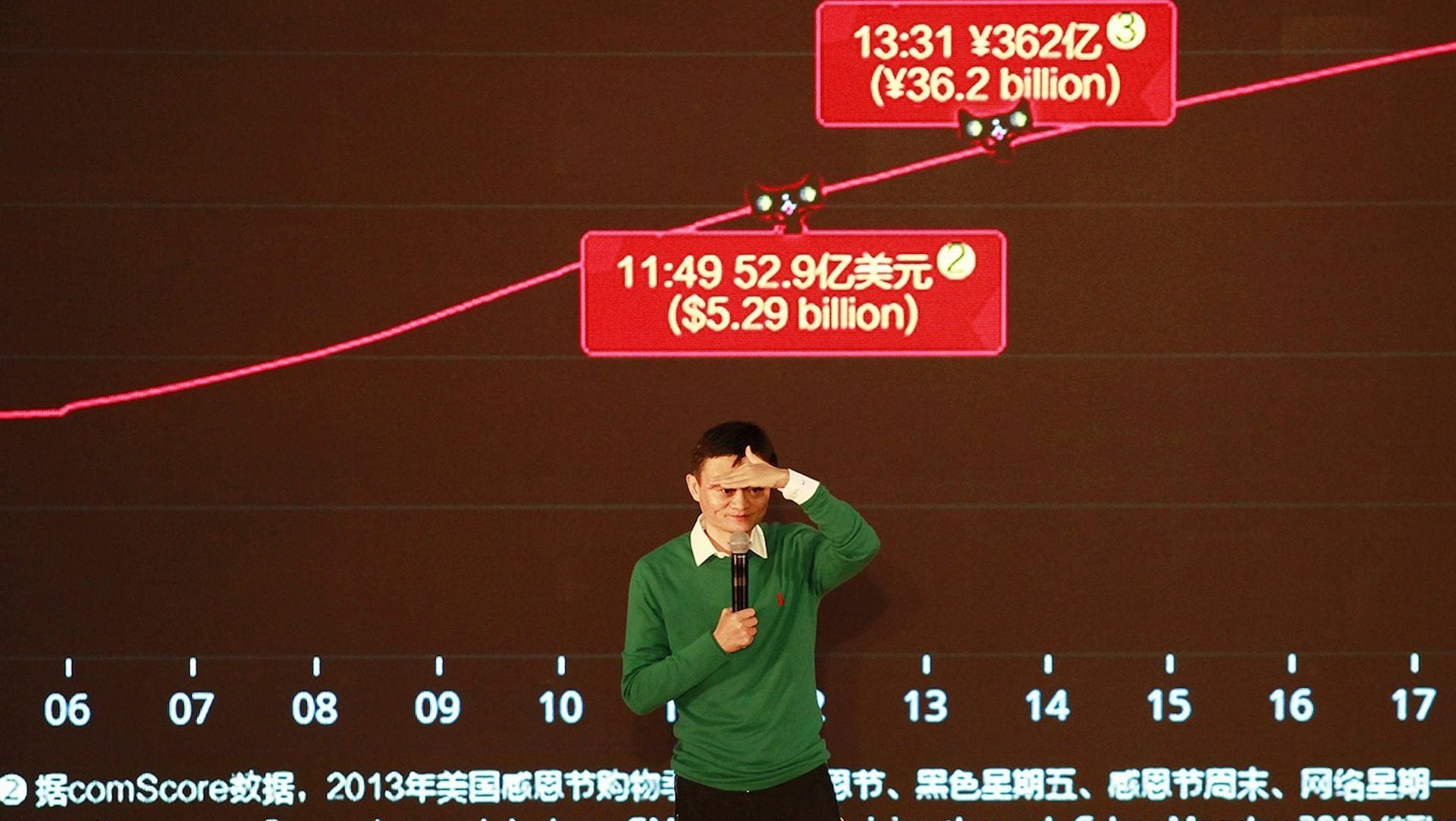Alibaba is selling average of $1 billion of goods every hour on this year’s single’s day
China’s biggest online shopping holiday, “Singles’ Day” (Nov. 11) is continuing its breakneck growth this year. Just two hours after it had kicked off, the total sales from Alibaba’s online platforms had already surpassed $7 billion, about half of last year’s total. As of 12:00 PM HKT, that figure hit $12 billion. At this pace, Alibaba could be on track to sell over $20 billion in merchandise today.


China’s biggest online shopping holiday, “Singles’ Day” (Nov. 11) is continuing its breakneck growth this year. Just two hours after it had kicked off, the total sales from Alibaba’s online platforms had already surpassed $7 billion, about half of last year’s total. As of 12:00 PM HKT, that figure hit $12 billion. At this pace, Alibaba could be on track to sell over $20 billion in merchandise today.
It’s the eighth time Alibaba has hosted the kinda made-up shopping holiday. Last year it sold $14.3 billion in merchandise, more than Facebook’s 2014 revenue.
The numbers are massive, but these sales (technically referred to as “gross merchandise value,” meaning the value of goods sold) don’t directly translate to profits, or even revenue, for Alibaba. While the company takes a commission on some items sold on Singles’ Day, it generates the bulk of its revenue from advertisements, not product purchases. It also spends lots of money on marketing and fulfillment to make the event a success.
Singles’ Day isn’t just limited to Alibaba—other Chinese online retailers, like JD.com, also participate. During last year’s holiday, China’s consumers purchased about 3.8 trillion yuan ($55.7 billion) in merchandise online in 2015, up 36.2 % up from 2014. Most of of that was generated through T-mall, Alibaba’s business-to-consumer marketplace. As Chinese consumers’ purchasing power grows, analysts expect the Chinese e-commerce market hit over $1.57 trillion by 2018—just a bit less than Canada’s expected GDP this year.